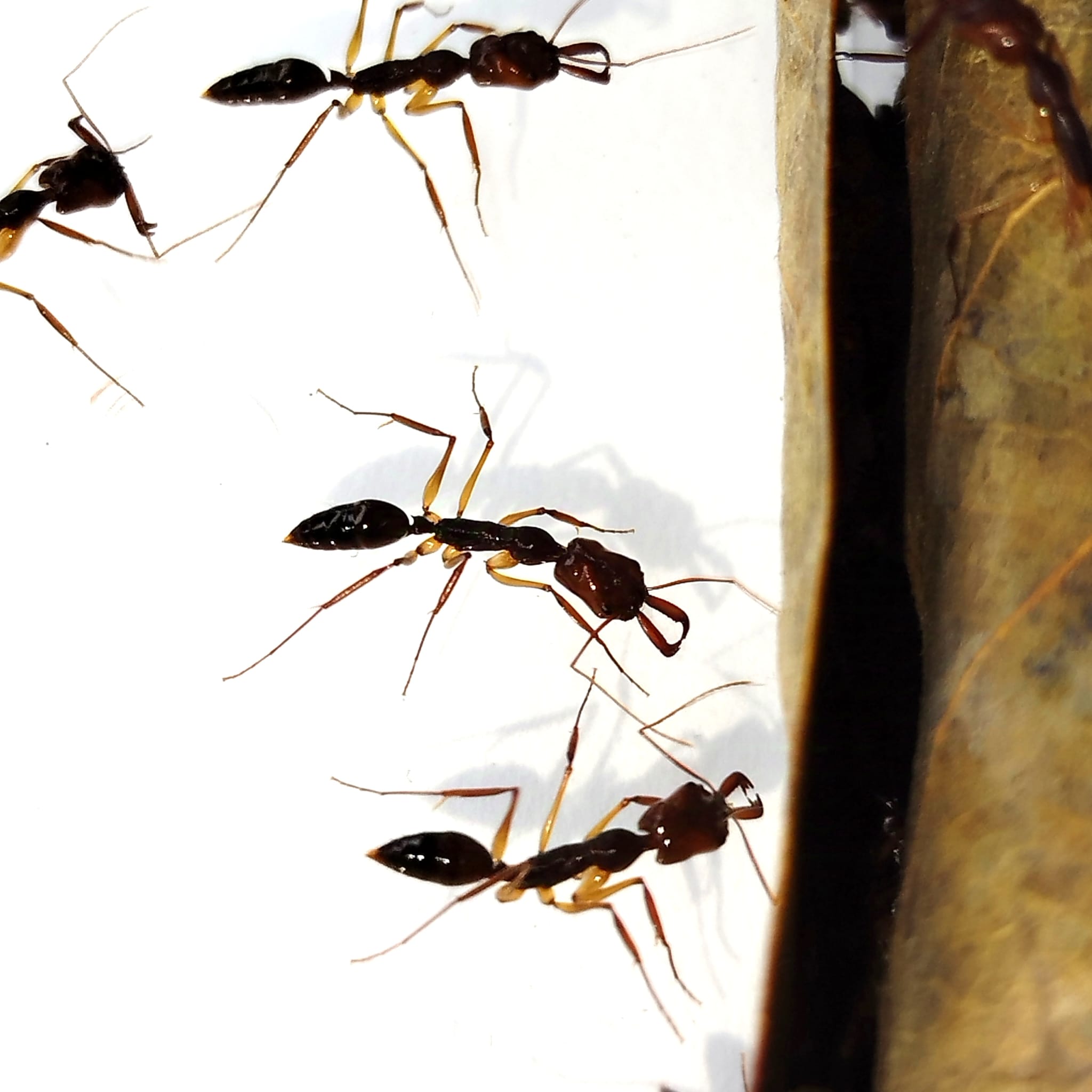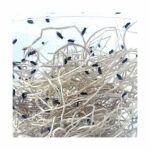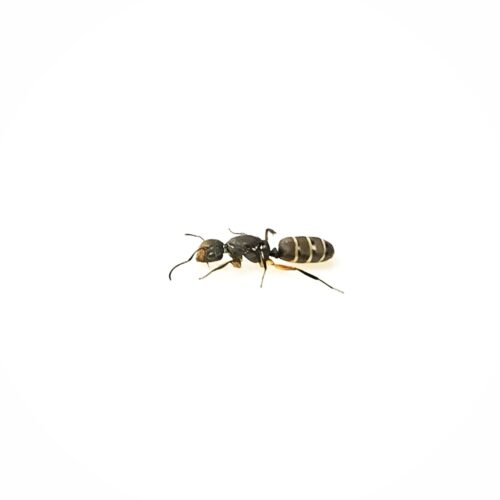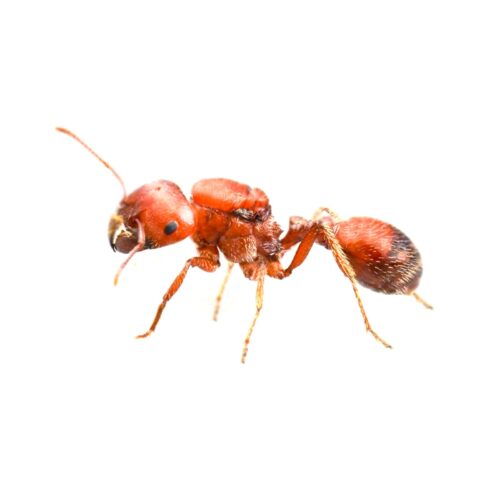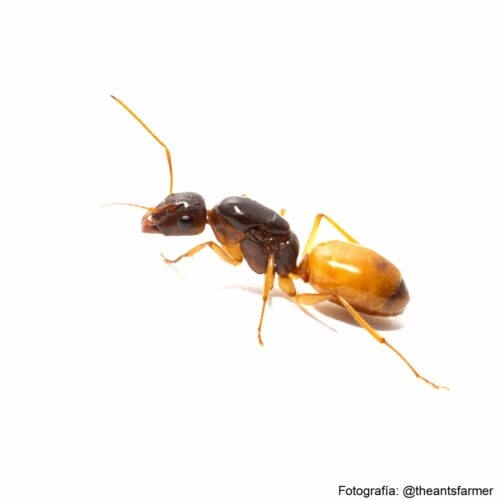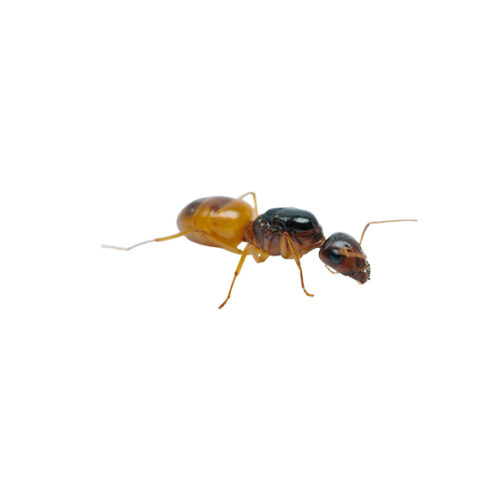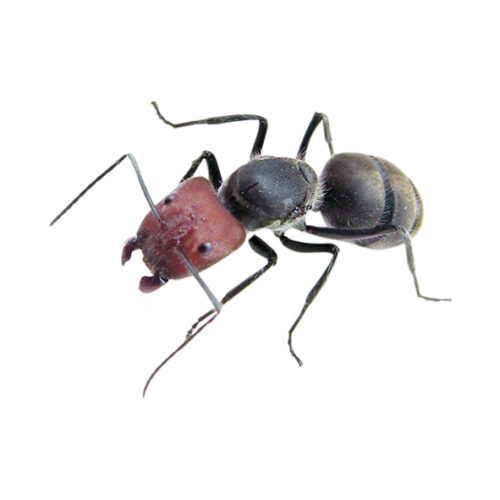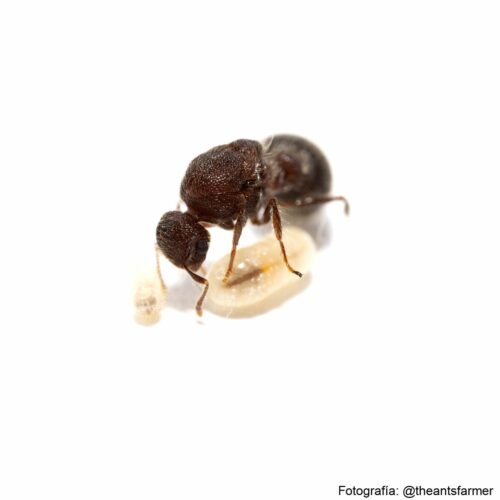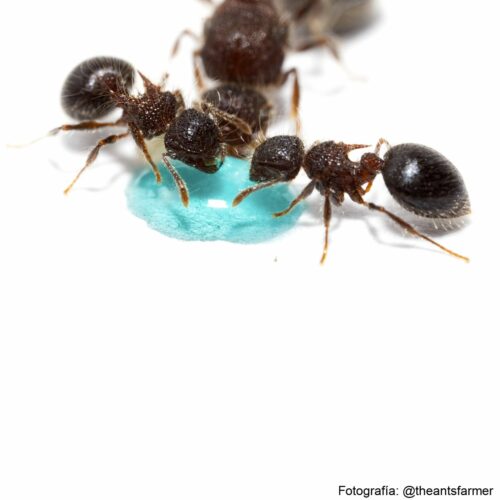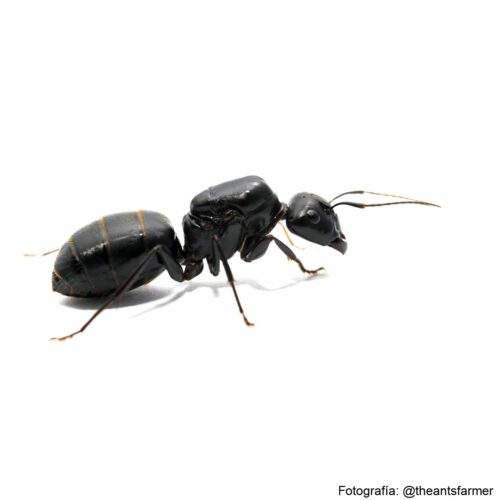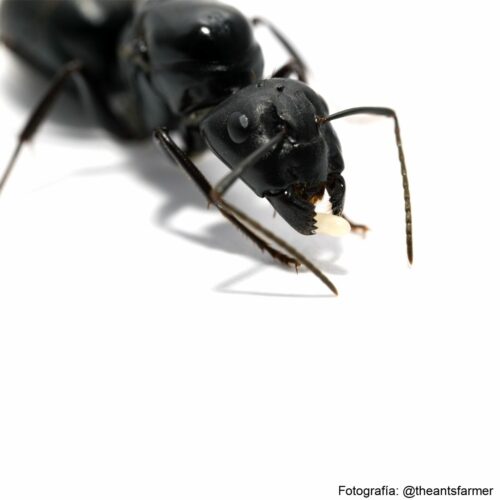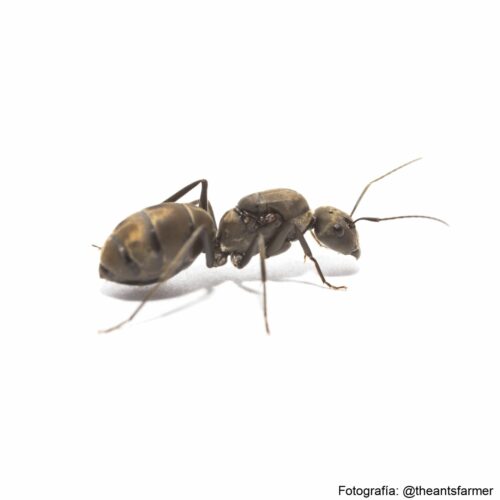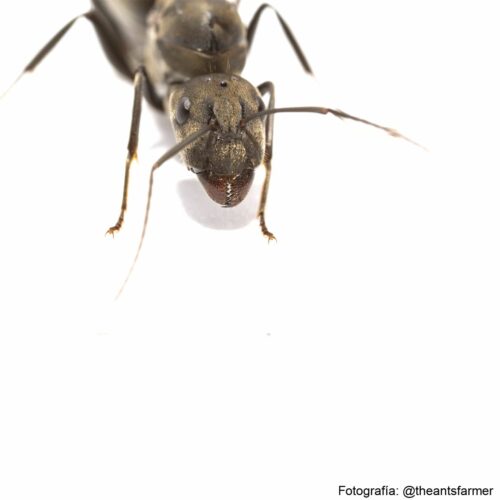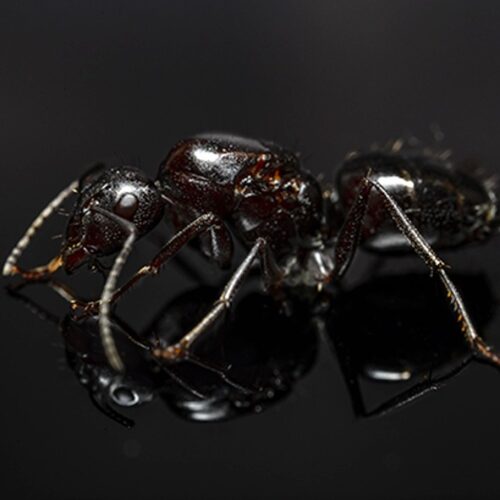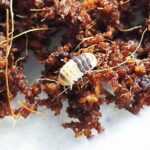
Cubaris sp. "White Shark"
5,50€ – 50,00€Price range: 5,50€ through 50,00€
Odontomachus rixosus
70,00€
Discover the fascinating Odontomachus rixosus, an exotic ant with trap-jaw mandibles and striking colors. Perfect for enthusiasts of unique species, it is active, predatory, and easy to observe. Add a wild and surprising touch to your ant farm!
SKU:
N/A
Categories: Ants, Exotic ants
Description
Technical Sheet: Odontomachus rixosus Ant
Scientific Classification
- Kingdom: Animalia
- Phylum: Arthropoda
- Class: Insecta
- Order: Hymenoptera
- Family: Formicidae
- Subfamily: Ponerinae
- Genus: Odontomachus
- Species: Odontomachus rixosus
General Characteristics
- Size:
- Workers: 8-10 mm
- Queens: 10-12 mm
- Males: 7-9 mm
- Coloration: Dark shades, typically blackish-brown with reddish highlights.
- Morphology:
- Trap-jaw mandibles capable of snapping shut rapidly to catch prey.
- Elongated body with long legs adapted for fast movement.
- Well-developed segmented antennae.
Distribution and Habitat
- Distribution: Native to Southeast Asia, found in countries like Thailand, Malaysia, Indonesia, and the Philippines.
- Habitat: Prefers tropical forests, humid areas, and soil rich in organic matter. Also adapts to disturbed environments near urban areas.
Behavior
- Diet:
- Omnivorous but primarily insectivorous. Feeds on small arthropods and occasionally sweet liquids like nectar.
- Activity:
- Mainly nocturnal but can be active during the day in shaded or highly humid conditions.
- Defense:
- Possesses a painful sting due to its functional stinger.
- Mandibles are used for both hunting and defense.
Colony
- Structure: Monogynous colonies (with a single queen).
- Size: Relatively small, ranging from 100 to 500 individuals.
- Nest: Builds nests in soft soil, decaying wood, or under rocks.
Reproduction
- Nuptial Flights: Typically occur during the humid seasons.
- Life Cycle:
- Egg → Larva → Pupa → Adult (approximately 8 weeks).
- Queen: Responsible for laying eggs and can live for several years.
Care in Captivity
- Type of Formicarium: Acrylic or soil-based formicariums with adequate humidity.
- Temperature: Between 22°C and 26°C (72°F to 79°F).
- Humidity: High, between 60% and 80%.
- Diet:
- Live prey such as crickets or fruit flies.
- Diluted honey or sugary liquids as a supplement.
- Precautions:
- Ensure the formicarium is escape-proof, as they are excellent escape artists.
- Handle with care due to their painful sting.
Interesting Facts
- Known for its mandible-closing speed, which can reach up to 50 m/s, making it one of the fastest in the animal kingdom.
- Used in scientific studies due to its predatory behavior and advanced sensory systems.
Additional information
| Options |
Queen with 15 to 25 worker ants |
|---|
Related products
Camponotus lasiselene
40,00€ – 50,00€Price range: 40,00€ through 50,00€
Sold out
Camponotus lasiselene Description: Ants from Southeast Asia that are characterized by being small. Size: 10mm queens. Workers about 4 mm.
Select options
This product has multiple variants. The options may be chosen on the product page
Camponotus fedtschenkoi
16,00€ – 55,00€Price range: 16,00€ through 55,00€
there is stock
Camponotus fedtschenkoi Origin and distribution: Afghanistan, Armenia, China, Iran, Kazakhstan, Kyrgyzstan, Turkey, Turkmenistan. Humidity: 50 – 70% Temperature: 24 –
Select options
This product has multiple variants. The options may be chosen on the product page
Camponotus singularis
35,00€ – 95,00€Price range: 35,00€ through 95,00€
Sold out
Camponotus singularis Origin and distribution: Indonesia, Borneo, Malaysia, India, Laos, Myanmar, Nepal, Thailand, Vietnam and China Humidity: 50 – 70%
Select options
This product has multiple variants. The options may be chosen on the product page
Meranoplus Bicolor
Sold out
Select options
This product has multiple variants. The options may be chosen on the product page
Camponotus japonicus
12,00€ – 25,00€Price range: 12,00€ through 25,00€
Sold out
Camponotus japonicus Origin and distribution: Japan, China, Democratic People’s Republic of Korea, Mongolia, Republic of Korea
Select options
This product has multiple variants. The options may be chosen on the product page
Camponotus parius
18,00€ – 28,00€Price range: 18,00€ through 28,00€
Sold out
Select options
This product has multiple variants. The options may be chosen on the product page

